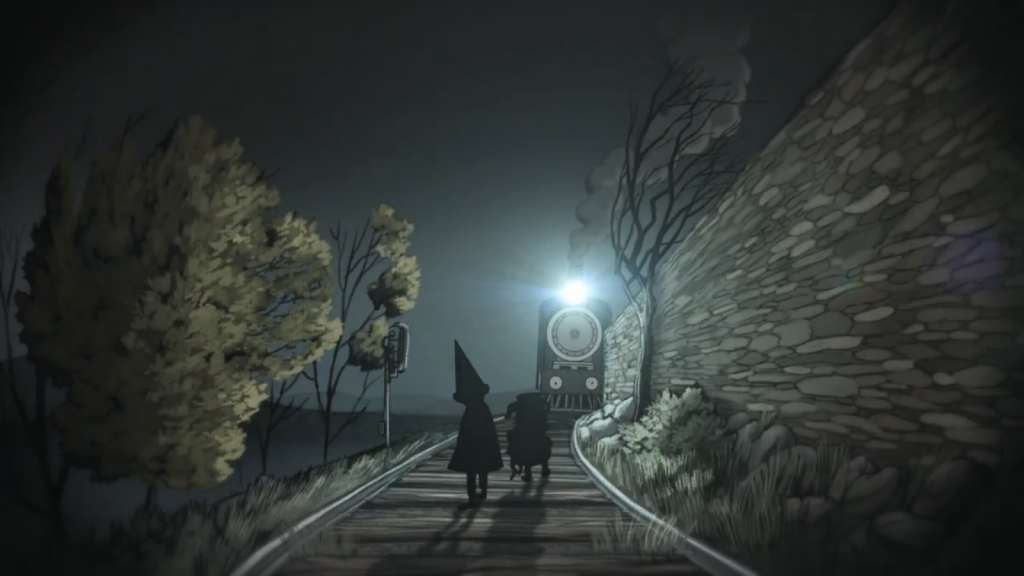Somewhere in the dark woods we find our boy Elijah Wood lost with his chubby companion garbed in cookware. This is the premiere of the Cartoon Network miniseries Over the Garden Wall, which came out late last year between November and December.
The miniseries was created by Patrick McHale, who’s previously worked on the creative directing board for Adventure Time.
Garden Wall is a wallowing tale of diffident teen, Wirt (Elijah Wood), Gregory (Collin Dean), his bombastic and naive step brother and Beatrice (Melanie Lynskey), a sassy twenty-something-probably girl who was cursed and turned into a blue jay and the best frog companion since Froggy from Sonic Adventure.
Considering his previous work, McHale shows a solid consistency in taste with Over the Garden Wall. This is evident with vocabulary and references which may seem a bit too complex for the designated demographic of this cartoon but are relevant enough for these kids to figure out (ie: Wirt in the episode ‘Mad Love’ noticing a change in architectural styles “it’s like French-rococo style. That doesn’t really seem in line with Endicott’s – Georgian sensibilities.”)
The lot is placed into a very deep and mystical Woods where creatures of European folklore and other curious folk reside. These include a wretched old crone (voiced by John Cleese), a nervous-paranoid tea mogul (also voiced by John Cleese), a forebodesome woodsman (voiced by Christopher Lloyd), and etc.
The woods contain most of the content in the series and becomes part of the plot’s objective, as it begins with Wirt and Gregory stumbling about, plainly lost. There is no time in the brief twelve-minute showtime for details of backstory explanation. In this, the series is dressed ambiguously in order to entertain its deep and humble story. Such a structure demonstrates nonchalantly as the heroes of this quest set forth through the woods in order to find home—all of which is explained throughout, steadily.
A prime medium is met between episodic connection to story and a loose spontaneity to sidequest out into the subplot. It’s a soothing series to watch, despite the sickening acts of evil which provide conflict to the episodes, such as the recurring ‘beast’ who locks our Christopher Lloyd, the Woodsman, into his forebodesome torment.
In fact, it is explicitly worth noting how damned dark this show is. Cartoons with relatively dark-or-so themes have become a norm nowadays, but this shit gets pretty real pretty fast. In the second episode, ‘Hard Times at the Huskin’ Bee,’ Wirt and Gregory find themselves digging their own graves while sentenced to do “a few hours of hard labor” for a pumpkin cult, which maintains a pleasant twist at the end in order to not scar the young viewers.
The style of art that embodies the series is also an important factor to how effective it is. There is evidence of that Pendleton Wardy style of character design but they’re a little more rigid than the loopiness seen in the likes of Finn, Jake, etc. Surrounding these particular-looking character designs are backdrop environments reminiscent of 19th century landscape paintings. It holds a very similar light, color, and general layout structure to many of the woodsy environments in the first Fable game. Each episode also features a musical segment of some-sort or another—the themes throughout are performed by gypsy folk band, the Petrojvic Blasting Company.
What more compliment could I give this proper production? Plenty. But alas, let me just suggest via a scale consistent with our favorite media reviewer, Jon Winkler, how good I think this show is.
4 out of 4 stars. Solid.




Comments are closed.